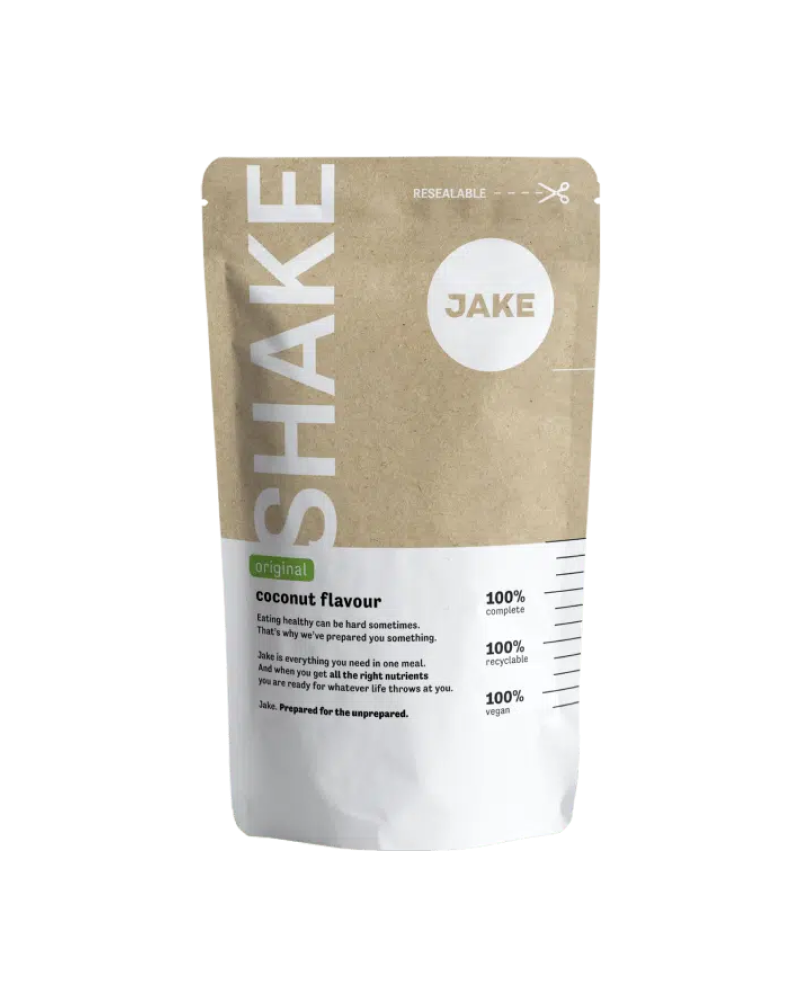6-minute read•July 17th, 2018
Manganese, not to be mistaken with magnesium, is an element known to man for 30,000 years. It was used by cavemen and ancient glassmakers. And your body is using it right now, too. Manganese protects your cells, helps your wounds heal and keeps your bones healthy. Here’s everything you need to know about it.

Short on time?
Best known for: Supporting metabolism; bone development; helps protect body cells against external influences
Good sources: Whole grains, nuts, leafy vegetables and teas. Also found in drinking water.
Adequate intake (AI): 3 mg/day. No tolerable upper intake level (UL) has been established.
Good to know: If inhaled, manganese is highly toxic, but symptoms can take months or years to surface.
Manganese in Jake:
Jake Light and Original: 33% of AI
Jake Sports: 25% of AI
Vitaminbars: 26% of AI
What is manganese?
Manganese is an essential mineral and as such, it needs to be in your diet daily.
On average, an adult body contains around 20 mg of manganese, mostly found in the bones, liver, kidneys and pancreas. Under normal circumstances, your body keeps the manganese level in your tissues stable by adjusting absorption and excretion levels as necessary.
Apart from being essential for humans, manganese is also an important nutrient for plants and plays a key role in photosynthesisPhotosynthesis is the process by which green plants, with the help of sunlight, turn carbon dioxide and water into nutrients. Oxygen generation is a by-product of this process..
We’ve been using manganese since the Stone Age. It’s in the pigments used for cave paintings as old as 30,000 years. And it was also used by Egyptians and Romans in glassmaking.
Health benefits of manganese
One of the key roles of manganese in the body is as a component of enzymesEnzymes are substances, mostly proteins, that speed up biochemical reactions within the body.Manganese-dependent enzymes are involved in the regulation of many functions throughout the body.
The key functions of manganese are:
- Helps protect body cells against external influences
- Supporting metabolism: Enzymes dependent on manganese are involved in the metabolism of carbohydrates, proteins and cholesterol.
- Bone development: Manganese is required for the production of proteoglycans, a major building block of cartilage and bone.
- Contributes to a normal energy metabolism
How much manganese do you need?
Healthy adults need 3 mg of manganese per day.This amount reflects the adequate intake (AI) established by the European Food Safety Authority. That’s around 65 grams of pecans.
Manganese in foods
Manganese is mostly present in plant foods, such as whole grains, nuts, leafy vegetables and teas. Although meat generally has very poor manganese content, it can boost its absorption in the body.
Some manganese is also found in drinking water. Overall, manganese levels in water sources rarely exceed 10 mcg/litre and the average manganese intake from water is considerably lower than the intake from food. However, in some geographic regions, manganese levels in water can reach 200 mcg/litre. Therefore, if you drink mineral water regularly, it’s a good idea to check its exact mineral content to avoid consuming excess manganese without knowing it.
The best food sources of manganese are:
| Food | AI (%)* | Manganese (mg) |
|---|---|---|
| Pecans (28 g) | 43% | 1.28 |
| Brown rice, cooked (100 g) | 36% | 1.07 |
| Spinach, cooked (113 g) | 28% | 0.84 |
| Pineapple, raw (100 g) | 26% | 0.77 |
| Tea, green (1 cup) | 14-53% | 0.41-1.58 |
* Based on the adequate intake (AI) established by EFSA for healthy adults (3 mg/day)
Although teas are a good source of manganese, they also contain tannins, which reduce the absorption of manganese in your body.
Another nutrient that can limit manganese absorption is iron. If you consume more iron than the recommended dietary allowance (RDA), it can lower your manganese absorption levels.
What if you’re not getting enough manganese?
Manganese deficiency is very rare, due to the high variety of foods and beverages that can provide it in your diet. If it does occur, manganese deficiency can affect growth and metabolism, as well as lead to skeletal abnormalities.
How much manganese is too much?
If inhaled, manganese is extremely toxic. It can cause serious damage to the brain. Symptoms of manganese poisoning can take months or even years to manifest. In its worst form, manganese poisoning leads to a syndrome known as manganism. It is characterised by tremors, muscle spasms and difficulty walking. In some cases, psychiatric symptoms like aggression and hallucinations are also observed.
Manganese poisoning from food alone hasn’t been reported to date. However, it’s possible to get manganese poisoning from contaminated water, causing symptoms similar to those observed after inhaling manganese.
Certain groups are more susceptible to manganese toxicity, including:
- New-borns and children: They have a higher manganese absorption level and lower manganese excretion level.
- People with impaired liver function: The liver is essential for excretion of excess manganese.
Currently, there are insufficient data to determine a tolerable upper intake level (UL) for manganese from food. However, some organisations recommend keeping your intake under 11 mg per day.This is a recommendation of the Food and Nutrition Board of the US Institute of Medicine.
Take-aways
The three things to remember about manganese are:
- Manganese helps protect your cells from damage. It also keeps your bones healthy and supports your metabolism.
- The richest sources of manganese are plant foods, including nuts, whole grains, leafy vegetables and teas. It’s also found in drinking water.
- You’re unlikely to consume a toxic amount of manganese through a regular diet. However, manganese can be highly toxic if inhaled or when you drink contaminated water.
Afraid to miss out on essential nutrients your body needs? You can always take our Jake meal replacement shakes or one of our delicious meal replacement bars.








